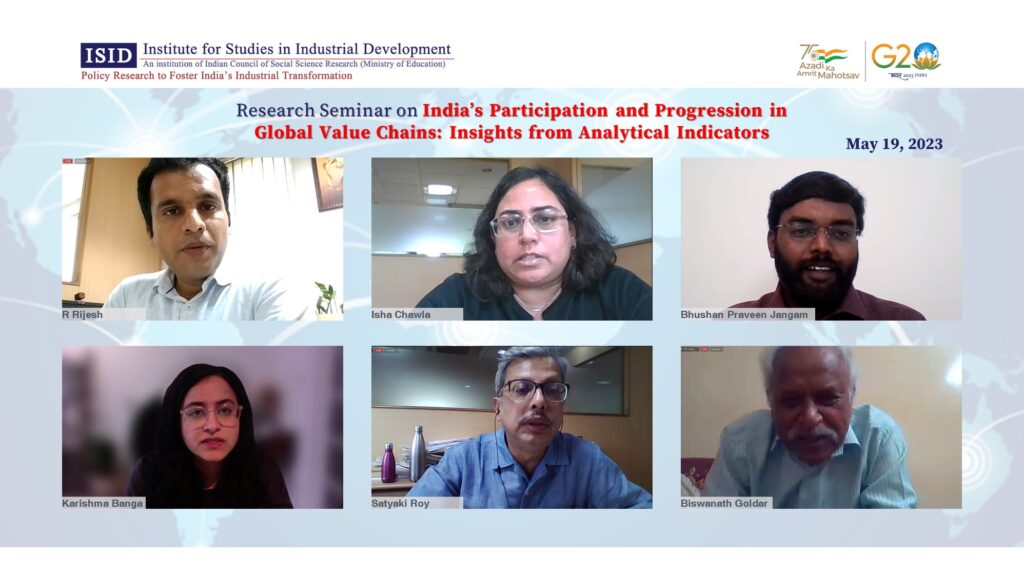
ISID organised a webinar on “India’s Participation and Progression in Global Value Chains: Insights from Analytical Indicators” on May 19, 2023. The presentation was made by Dr Isha Chawla, ISID. The eminent panellists of the webinar included Dr Bhushan Praveen Jangam, Assistant Professor, Indian Institute of Technology, Jodhpur; Dr Karishma Banga, Research Fellow, Institute of Development Studies, United Kingdom; and Dr Satyaki Roy, Associate Professor, ISID. Dr R Rijesh, Assistant Professor, ISID moderated the webinar.
Click here to REGISTER
Join Zoom Meeting https://us02web.zoom.us/j/83893305495?pwd=R2tIeFJNNWdFZnBBbTlyWE1EVEcwUT09
Meeting ID: 838 9330 5495
Passcode: 20230519
Abstract: With the rise of global value chains (GVCs), gross trade data tends to mask complex patterns of international production sharing. For 1995-2018, using the OECD Trade in Value Added (TiVA) database, this paper examines value-added components of gross exports by origin (home or abroad) to study the extent of GVC participation based on forward linkages (domestic value-added in foreign exports as share of a country’s gross exports) and backward linkages (foreign value-added as share of a country’s gross exports). For 2000 and 2007-2020, the Borin and Mancini (2019) exports decomposition framework adopted by ADB (2022) consolidated dataset for 25 economies in Asia and the Pacific helps quantify forward and backward GVC linkages in the primary, low-technology manufacturing, medium-to-high-technology manufacturing, business services, and personal and public services sectors. As previously demonstrated for an earlier time period, shares in participation gains in total value-added created within GVCs were found to be skewed towards the OECD and China. Though India’s GVC participation rate has risen over time, it was lower than that of several economies in the Asia-Pacific region, and its relative share in the total participation gains was marginal. Nevertheless, India’s relative share in forward GVC content from (and backward GVC content to) the region was not as peripheral. Revealed comparative advantage based on value-added exports yields further insights. Raising net participation gains (ratio of forward to backward linkages) at the sectoral level and seizing opportunities in GVCs in times of insecurity will require key enablers in a world where manufacturing processes are being rewired.


